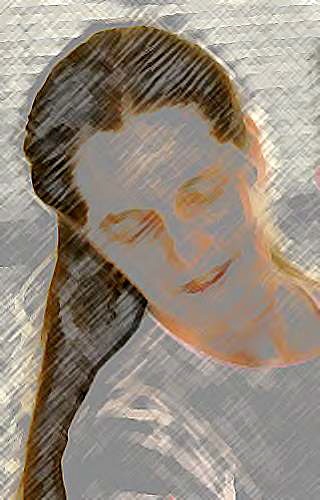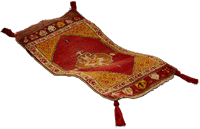http://www.canvasgfx.com/en/products/canvas-draw
Many thanks to Barbara Bergsten and Robin King for assistance in figuring out how to use Pages this way!
UPDATE: If you use a PC with Windows software, none of this will work obviously. See this older article for some help finding stitch diagram software for PCs.
https://chstitchguides.blogspot.com/2014/07/software-for-writing-stitch-guides.html
UPDATE #2: Several NP Nation members highly recommend Stitch Fiddle. There is a paid version but they say the online free one works for basic stitches.
https://www.stitchfiddle.com/en
UPDATE #3: Here's a July 2019 discussion of software for stitch diagrams plus a tutorial on using Adobe Illustrator to create a woven graph by Gay Ann Rogers.
https://www.facebook.com/groups/NeedlepointNation/permalink/2354964311247380/
**************************************************
And now for the Pages tutorial!
UPDATE #3: Here's a July 2019 discussion of software for stitch diagrams plus a tutorial on using Adobe Illustrator to create a woven graph by Gay Ann Rogers.
https://www.facebook.com/groups/NeedlepointNation/permalink/2354964311247380/
**************************************************
And now for the Pages tutorial!
First, open a new Pages word processing document. Give the new document a name. You also might want to put the stitch name at the top of the new page you just created. I normally Bold and Center stitch names over a diagram.
(Undo in the Edit pulldown menu is going to be your best friend as you go through this tutorial. Do something wrong? Use Undo!)
Click on Table.
From the Table Menu, choose the proper number of Body Rows and Body Columns to give you the size grid you need.
In Table Menu/Header and Footer, turn off headers by unchecking the box.
Also in Table Menu, highlight the entire grid you created, then make the Column Width and Row Height the same. I normally start with 0.3 or 0.5 as the width, depending on how many repeats of the stitch are needed to illustrate how it is done.
Uncheck the “Automatically Resize to Fit Content” box, which is also in the Table Menu.
You may make the cell borders thicker in Table Menu/Cell Borders and add a colored background to the squares with Cell Background, but normally I leave this alone as I prefer the simplest diagrams possible.
In the new document, put the title of the stitch you are diagramming at the top of the page, centered over the table you created. I normally Bold the title and resize the Font to 18 or 24.
Add a copyright statement underneath the table. I use “© Copyright 2022 Jane M. Wood. All Rights Reserved.” The © symbol can be found in Edit/Special Characters in the pulldown menu. Highlight the entire copyright statement and resize the Font to 8 or 9 or whatever size you want. By the way, I usually make sure all the fonts used are identical. They won't necessarily be if you choose an item from Edit/Special Characters. That can change it from the standard font set in your word processing document.
Click on Shapes and choose the shape you need for the first stitch element by clicking on it. Find the Wrap section of the Inspector Menu and uncheck Object Causes Wrap so that the shapes are on top of the grid, not displacing it. Now the shape can be dragged to the part of the grid you want it on and resized by clicking on the tiny box at each end of the shape and dragging that end. Pay attention to the degrees shown as you move a line or arrow as this helps make it straight. Clicking on the middle of the shape (as long as the two boxes are visible at each end of the shape) allows you to drag it around the grid. Clicking outside the grid (but within the word processing document) will make the boxes at each end of the line you just created vanish.
Holding the Option key on the keyboard down while clicking on a shape makes a duplicate of that shape which you can move elsewhere and shorten/lengthen if necessary. Blue lines will appear/disappear on the grid to show when rows of lines or arrows are lined up. These blue lines can be a pain as sometimes they won’t allow you to position a shape where you want it, depending on the version of Pages you are using. (I don’t know how to turn them off.) You may have to manually resize a shape to get it where you want in the length you want.
To erase a line you don’t want, click on it and then hit Delete on the Keyboard. You can also drag a line off the grid onto the margin of the word processing document to park it there temporarily until you either delete it or reposition it elsewhere.
Always make sure you are clicking on the shape, not the underlying grid. If the shape has a pen nib symbol showing up at the ends, put your cursor outside the grid table and click. This turns off the pen nib which is the command allowing you to draw curvy lines on the grid. Trust me--that’s usually not a good idea! Ditto if the shape becomes a solid red box instead of a black line box. Remember to use Undo from the Edit drop down menu when necessary.
To change the color of the shape you have chosen, click on that shape, then choose Graphic from the Inspector menu. Under Stroke you will see Line with three boxes, Click on the middle one which has a thick black middle. The Colors box will open. Choose a color from the options and both your shape and the middle box will change to that color. You can then copy that colored shape and reproduce it in a row on your diagram. I try to use only red, black, navy, and sometimes gray in my diagrams as those colors are easier to see if one has any visual impairment. But again, you do your diagram the way you prefer.
The solid oval shape can be resized to make a bead. Choose Oval from Shapes, then find the Wrap section of the Inspector Menu and uncheck Object Causes Wrap. Now put the oval in the margins outside the grid to make it easier to see what you are doing. There is a little grid outside the shape you can drag to resize the Oval to any shape you want. You can make it rounder, more oval, or make it larger or smaller. To change the color of the shape you have chosen, click on that shape, then choose Graphic from the Inspector menu. Under Stroke you will see Line with three boxes, Click on the middle one which has a thick black middle. The Colors box will open. Choose a color from the options and both your shape and the middle box will change to that color.
You can even create two ovals, one large and colored and one small and round and black, to make it look like the end of the bead has a hole. Position the larger colored oval on your diagram first, copy and place as many of them as you have beads on the diagram, then position as many small rounds as you need on top of each “bead” to create the bead hole.
You can also diagram a thread through the middle of a bead by choosing a Line from Shapes and then choosing an Oval to put on top of the line. If your “bead” oval and your “thread” line are both black, you can put them on the grid you made in any order. If the bead is colored, add the Line to the grid first and then drop the Oval “bead” on top.
To number the stitch path, highlight the box in the Table grid where you want to place a number, then change the font size to be as small as possible. Type the number. To move the number you just entered from the left side of the box to the right, use Alignment from the Text section of the Inspector Menu. You can also center the number if you wish. Note that the size of the Column Width and Row Height of your table matter. You probably can’t use a number if width and height are less than 0.5 as there will not be room for ia number to be visible. You will get a + symbol in the box instead, indicating a size issue.
Once your diagram is ready, save the document and choose Print from the options in File in the pull down menu. The lower left corner of the Print menu has a PDF button. Click that and drag your cursor down to choose Save As PDF. You will now have two files on your desktop, one the Pages file and one the PDF file. I keep my Pages diagrams in a Stitches/Pages folder on my computer in case I have to redo the file.
Double click on the PDF file you just made to open it. You will have a Preview pull down menu visible. Choose File and then Export. A new window opens. Change the Format to JPEG and then click on Save. Now you have a JPEG version of your PDF diagram which you can edit and crop in iPhoto. I discard my PDF file but some stitch guide writers prefer to use a PDF file in their stitch guides. I use JPEGs instead. (You can skip this formatting to JPEG step if you only use PDF files in your guides.)
Open iPhoto and crop your new JPEG file, then save it. I just overwrite the original JPEG file but this isn't an option in 2019 versions of Pages. Now you have a diagram to use. I keep these in a Stitches/JPEG file in my computer. Note that if you have to go back to the original Pages file to edit the diagram, sometimes you will have to upgrade to a later version of Pages, which can make editing hard. I try to do everything in one sitting for this reason.
Have fun!
UPDATE: Gay Ann Rogers tells me that to create curved lines using Pages, under Shapes there's a little curve icon at the top right of the panel. Drag it onto a page in Pages. The three little "boxes" along the curve are called "anchor points." Put your cursor on top of any one and drag it to change the curve. There used to be a little 'pen tool' so that you can actually step into real curves and adjustments. Gay Ann sent the diagram below, too. Thanks for the help, Gay Ann!
UPDATE: Gay Ann Rogers tells me that to create curved lines using Pages, under Shapes there's a little curve icon at the top right of the panel. Drag it onto a page in Pages. The three little "boxes" along the curve are called "anchor points." Put your cursor on top of any one and drag it to change the curve. There used to be a little 'pen tool' so that you can actually step into real curves and adjustments. Gay Ann sent the diagram below, too. Thanks for the help, Gay Ann!



No comments:
Post a Comment